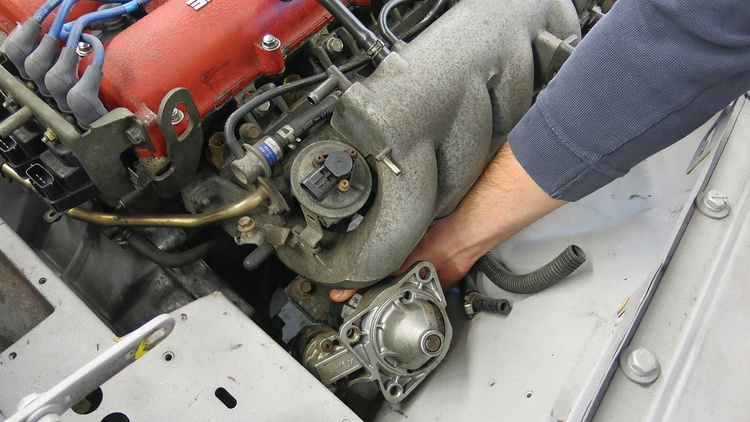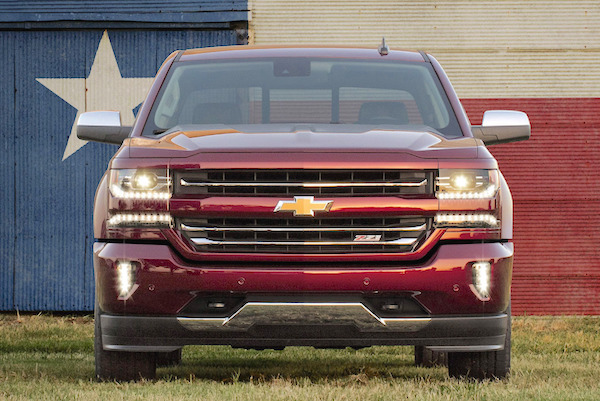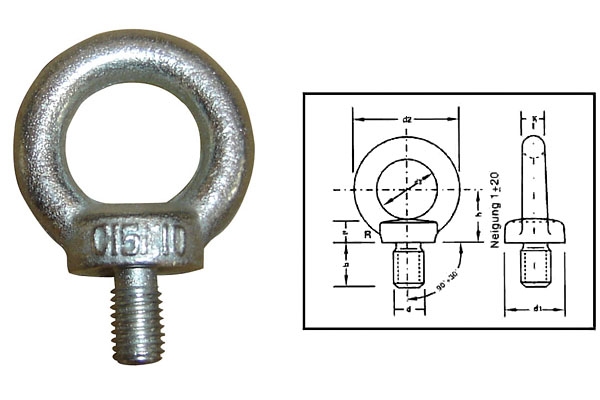The Art of Engine Swaps: Balancing Performance and Reliability

Are you a car enthusiast who craves more power and performance from your vehicle? If so, you may have considered the art of engine swaps. Engine swaps, the process of replacing a vehicle’s original engine with a different one, can be an exhilarating and rewarding experience. But choosing the right engine for your project requires a delicate balance between performance and reliability. In this article, we will explore the world of engine swaps, diving into the factors that must be considered to ensure your new power plant delivers the desired performance while maintaining the reliability you depend on. Whether you’re a seasoned mechanic or a curious car lover, join us as we unravel the secrets of the art of engine swaps and discover how to achieve the perfect balance between power and dependability. Get ready to rev up your engines and embark on an exciting journey of automotive transformation.
Benefits of Engine Swaps
Engine swaps offer a multitude of benefits for car enthusiasts looking to enhance their vehicle’s performance. Firstly, an engine swap can provide a significant increase in horsepower and torque. By replacing the stock engine with a more powerful one, you can enjoy a thrilling boost in acceleration and top speed. Additionally, engine swaps offer the opportunity to upgrade to more modern and advanced engines, which often come with improved fuel efficiency and emissions standards. This means not only more power but also a greener and more environmentally friendly performance.
Another advantage of engine swaps is the ability to customize your vehicle to suit your specific needs and preferences. Whether you’re looking for a high-revving engine for track days or a torquey powerhouse for off-road adventures, there is an engine out there that can fulfill your desires. Engine swaps allow you to tailor your vehicle’s performance characteristics to match your driving style, making every journey a thrilling and personalized experience.
Lastly, engine swaps can also be a cost-effective solution compared to modifying the stock engine. While aftermarket upgrades can be expensive and may have limitations, swapping in a more powerful engine can often be a more affordable option that offers greater performance gains. Additionally, engine swaps can increase the resale value of your vehicle, making it an attractive option for those looking to sell or upgrade in the future.
Factors to Consider Before an Engine Swap
Before diving headfirst into an engine swap project, there are several important factors that need to be considered. Firstly, it’s crucial to evaluate the compatibility of the engine you’re considering with your vehicle. This includes aspects such as engine dimensions, mounting points, transmission compatibility, and electrical connections. Ensuring a proper fit will save you time, money, and headaches down the road.
Next, it’s essential to research and understand the performance characteristics of the engine you’re looking to swap. Consider factors such as power output, torque curve, and RPM range. These aspects will have a significant impact on your vehicle’s performance and driving experience. Additionally, it’s important to consider the availability and cost of aftermarket parts and support for the engine you choose. Having a readily available and affordable supply of parts can make maintenance and future upgrades much easier.
Furthermore, it’s crucial to assess your own mechanical skills and resources. Engine swaps can be complex and time-consuming projects, requiring specialized tools, knowledge, and experience. If you’re a seasoned mechanic, you may feel confident tackling the project on your own. However, if you lack the necessary skills or resources, it may be wise to seek professional assistance. This will ensure the swap is done correctly and minimize the chances of costly mistakes or damage to your vehicle.
Choosing the Right Engine for Your Swap
The key to a successful engine swap lies in choosing the right engine for your project. With a vast array of engine options available, it can be overwhelming to narrow down your choices. However, by considering a few important factors, you can make an informed decision that will deliver the performance and reliability you desire. The LS3 is been commonly fitted inside of the range rover classic and Defender model ranges for a great match up of power and weight
Firstly, it’s crucial to determine your performance goals and intended use for the vehicle. Are you looking for maximum horsepower and acceleration, or do you prioritize low-end torque and drivability? Understanding your desired performance characteristics will guide you in selecting an engine with the appropriate power and torque output, as well as the ideal RPM range for your driving style.
Secondly, it’s important to research and compare different engine options. Pay attention to factors such as engine displacement, cylinder configuration, and forced induction (if applicable). Each engine type has its own unique characteristics and performance attributes. For example, a naturally aspirated V8 may provide a classic muscle car feel, while a turbocharged four-cylinder engine offers a balance of power and fuel efficiency.
Furthermore, it’s essential to consider the availability and cost of parts and support for the engine you choose. Opting for a popular engine with a large aftermarket community can make future maintenance and upgrades more accessible and affordable. Additionally, it’s important to research the reliability and durability of the engine you’re considering. Look for common issues and potential weaknesses, as addressing these upfront can save you from headaches and unexpected expenses in the long run.
Preparing Your Vehicle for an Engine Swap
Before starting the engine swap process, it’s crucial to properly prepare your vehicle. This will ensure a smooth and successful installation, minimizing the chances of complications or damage.
First and foremost, thoroughly clean and organize your workspace. A clean and clutter-free environment will make the engine swap process more efficient and safe. Remove any unnecessary components, tools, or debris that may hinder your progress.
Next, gather all the necessary tools and equipment required for the engine swap. This includes engine hoists or lifts, engine stands, jack stands, wrenches, sockets, and various other tools specific to your vehicle and engine combination. Having all the tools readily available will save you time and frustration during the installation process.
Additionally, it’s important to inspect and address any existing mechanical issues or maintenance needs before performing the engine swap. This includes replacing worn-out components, fixing leaks, and ensuring all systems are in proper working order. Addressing these issues beforehand will prevent potential complications and ensure the longevity and reliability of your new power plant.
Lastly, consult the vehicle’s service manual or reputable online resources for detailed instructions and specifications regarding the engine swap process for your specific make and model. Familiarize yourself with the necessary steps, torque specifications, and any unique considerations or precautions that need to be taken. Having a comprehensive understanding of the process will reduce the chances of mistakes and streamline the installation.
Engine Swap Process: Step-by-Step Guide
Performing an engine swap can be a complex endeavor, but with careful planning and execution, it can be a rewarding and successful project. Here is a step-by-step guide to help you navigate the engine swap process:
- Disconnect the battery: Begin by disconnecting the vehicle’s battery to prevent any electrical mishaps during the swap.
- Drain fluids: Drain the engine coolant, engine oil, and any other fluids that may impede the engine removal process.
- Remove components: Remove the necessary components to gain access to the engine, such as the air intake system, exhaust system, radiator, and accessories like the alternator and power steering pump.
- Disconnect wiring and hoses: Carefully disconnect all electrical connections and hoses attached to the engine. Label and document each connection to ensure proper reinstallation later.
- Support the engine: Attach an engine hoist or lift to the engine and secure it properly. Ensure that the engine is balanced and supported safely before proceeding.
- Remove engine mounts and transmission: Loosen and remove the engine mounts and transmission mounts. Carefully lower the engine and transmission assembly out of the vehicle.
- Prepare the new engine: Inspect and prepare the new engine for installation. This includes transferring necessary components from the old engine to the new one, such as the intake manifold, exhaust manifolds, sensors, and accessories.
- Install the new engine: Carefully lift the new engine and transmission assembly into the vehicle, aligning it with the engine mounts and transmission mounts. Ensure that all connections, hoses, and wiring are properly reattached.
- Reinstall components: Reinstall all components that were removed during the engine removal process, such as the radiator, air intake system, exhaust system, and accessories.
- Fill fluids and test: Fill the engine with fresh oil and coolant. Double-check all connections and wiring. Reconnect the battery and start the engine. Monitor for any leaks, abnormal noises, or warning lights. Take the vehicle for a test drive to ensure everything is functioning correctly.
Performance Upgrades for Engine Swaps
One of the exciting aspects of engine swaps is the opportunity to further enhance the performance of your vehicle. After successfully completing the engine swap, you can explore various performance upgrades to unlock even more power and optimize your driving experience.
First and foremost, consider upgrading the intake and exhaust systems. These modifications can improve airflow, allowing the engine to breathe more freely and produce additional horsepower and torque. Upgrading to a high-flow cold air intake and a performance exhaust system can also enhance the engine’s sound, giving your vehicle a more aggressive and sporty note.
Next, consider upgrading the engine’s fuel system. Installing larger fuel injectors and a high-flow fuel pump can provide adequate fuel delivery for increased performance. Additionally, upgrading the ignition system with performance spark plugs, ignition coils, and an aftermarket ignition controller can improve combustion efficiency and power output.
Furthermore, optimizing the engine’s airflow can significantly enhance performance. Upgrading to a larger throttle body, porting and polishing the cylinder heads, and installing high-performance camshafts can improve airflow efficiency, resulting in increased horsepower and torque.
Lastly, consider upgrading the suspension and braking systems to handle the newfound power and performance of your engine swap. Performance-oriented suspension upgrades such as stiffer springs, adjustable dampers, and sway bars can improve handling and cornering capabilities. Upgrading to larger and more capable brakes can provide better stopping power and ensure your vehicle can safely handle the increased speeds and accelerations.
Reliability Considerations for Engine Swaps
While chasing performance gains is exhilarating, it’s crucial not to overlook the importance of reliability when it comes to engine swaps. A powerful engine is of little use if it is prone to frequent breakdowns or requires constant maintenance.
Firstly, it’s essential to select an engine known for its reliability and durability. Research the engine’s track record and look for any common issues or weaknesses. Opt for engines with a reputation for longevity and minimal maintenance requirements. Additionally, consider engines with a large aftermarket support network, as readily available parts can make future repairs and maintenance more accessible and affordable.
Secondly, ensure that the engine swap is performed correctly and with meticulous attention to detail. This includes proper installation of all components, ensuring that all connections and wiring are secure, and following the manufacturer’s specifications and guidelines. Any shortcuts or mistakes during the installation process can compromise the performance and reliability of the engine.
Furthermore, it’s crucial to perform regular maintenance and inspections on your engine swap. Follow the manufacturer’s recommended service intervals for oil changes, fluid flushes, and component inspections. Regularly monitor the engine’s vital signs, such as oil pressure, coolant temperature, and fuel pressure, to catch any potential issues before they escalate.
Lastly, be mindful of the engine’s operating conditions and avoid excessive stress or abuse. Proper warm-up and cool-down procedures, avoiding prolonged high RPM operation, and regular checks for any signs of abnormal wear or malfunction can go a long way in ensuring the reliability and longevity of your engine swap.
Common Challenges and How to Overcome Them
While engine swaps can be immensely rewarding, they can also present various challenges along the way. Being aware of these challenges and knowing how to overcome them will help ensure a successful and enjoyable engine swap experience.
One common challenge is the compatibility between the engine and the vehicle’s existing systems. Differences in wiring harnesses, sensors, and electronics can pose difficulties during the installation process. To overcome this, it may be necessary to modify or adapt the existing wiring and connectors to accommodate the new engine. Consulting wiring diagrams, utilizing conversion harnesses, or seeking professional assistance can help overcome these compatibility issues.
Another challenge is the physical fitment of the new engine into the vehicle’s engine bay. Engine swaps often require modifications to the engine mounts, transmission mounts, and other components to ensure a proper fit. Careful measurements, fabrication skills, and access to specialized tools may be necessary to overcome these fitment challenges.
Additionally, engine swaps may require modifications to the vehicle’s fuel system, cooling system, exhaust system, and other supporting components. This can involve custom fabrication, adapting aftermarket parts, or sourcing specialized components to ensure everything works harmoniously. Thorough research, planning, and consulting with experienced enthusiasts or professionals can help overcome these challenges.
Lastly, it’s important to be aware of any legal and regulatory requirements associated with engine swaps in your jurisdiction. Some regions have specific laws and emissions standards that must be adhered to when modifying or replacing engines. Researching and understanding these regulations beforehand will prevent legal complications and ensure compliance with local laws.
Professional Engine Swap Services
While performing an engine swap can be a rewarding DIY project, it may not be suitable for everyone. If you lack the necessary mechanical skills, tools, or resources, or simply prefer to leave it to the experts, professional engine swap services can be a viable option.
Professional engine swap services offer several advantages. Firstly, they have the expertise and experience to handle even the most complex engine swaps. Their knowledge of specific makes and models, as well as access to specialized tools and equipment, ensures a high-quality and hassle-free installation.
Additionally, professional engine swap services often have established relationships with reputable parts suppliers. This means they can source the necessary components and aftermarket upgrades at competitive prices, ensuring the best value for your money. Furthermore, their connections in the automotive industry may provide access to exclusive parts and support that may not be readily available to the general public.
Lastly, professional engine swap services can offer peace of mind and warranty coverage. A reputable service provider will stand behind their work and provide guarantees on the installation and performance of the engine swap. This eliminates the risks associated with DIY installations and provides reassurance that your investment is protected.
Conclusion
The art of engine swaps is a thrilling and challenging pursuit that allows car enthusiasts to unlock new levels of performance and customization. By carefully considering the factors that contribute to a successful engine swap, such as compatibility, performance goals, reliability, and personal skill level, you can embark on a journey of automotive transformation.
Whether you choose to tackle the engine swap yourself or enlist the help of professionals, the rewards of a well-executed engine swap are undeniable. Beyond the exhilarating power and performance gains, an engine swap can breathe new life into your





